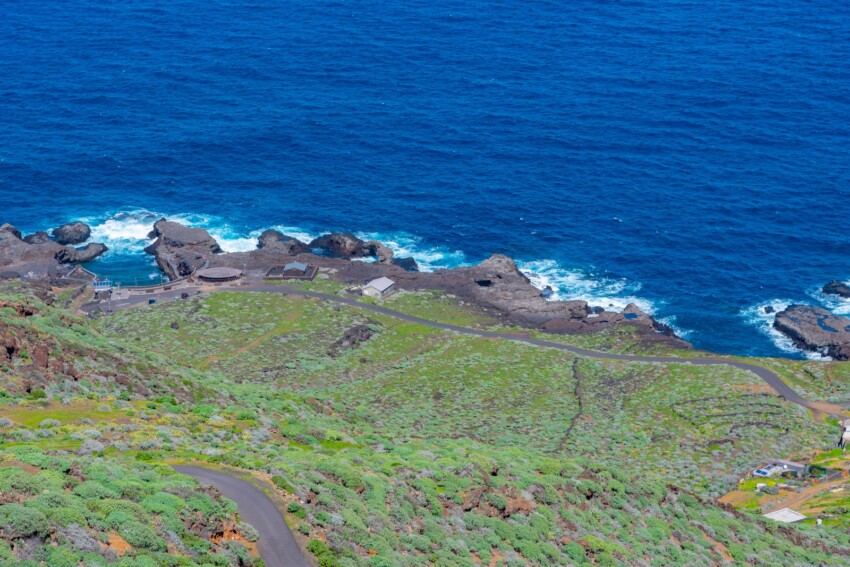

The island of El Hierro, the smallest of the Canary Islands, is a true paradise for scuba diving enthusiasts as it boasts the best seabed in the world, but its volcanic beaches and rocky coves, lapped by crystal-clear waters, are no less impressive.
Declared a UNESCO Biosphere Reserve, El Hierro boasts uniquely beautiful beaches nestled between high cliffs.
The best beaches in El Hierro are to be found in the south of the island, in Tamaduste, and in the wide bay of El Golfo, where the sensational natural pools of El Charco Sargos, El Charco Azul, protected by an imposing basalt arch, and Charco Manso, among the most fascinating places on the island, are located.
Don’t miss Playa de las Arenas Blancas, La Restinga beach, La Caleta, Playa del Verodal, and the wide black sand beach of Timijiraque in the eastern part of El Hierro.
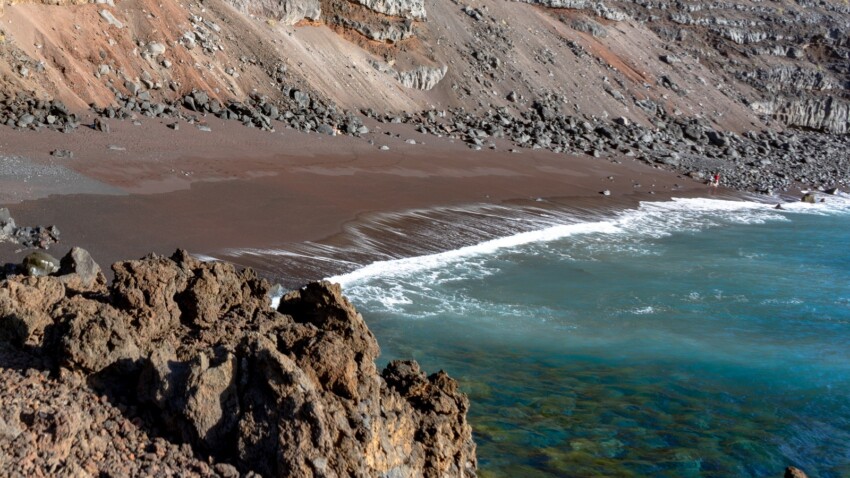
The spectacular Playa del Verodal beach is located along the west coast of El Hierro near the village of La Frontera and the Orchilla Lighthouse.
Considered by many to be the most beautiful on the island, Verodal is a charming beach of shimmering coarse red sand overlooked by towering brownish cliffs.
A full 150 metres long and 10 metres wide, making it the widest in El Hierro, Playa del Verodal is naturally a volcanic beach but, as well as being picturesque, often subject to strong sea currents and high waves.
Behind the beach is a picnic area equipped with benches, tables and barbecues and from which there are magnificent views of the bay.
To reach Verodal, one has to walk along a narrow, winding path that winds along the arid coastline of this corner of the island.
The Playa de las Arenas Blancas is located along the northern side of El Hierro, in the western part of the bay of El Golfo, on the so-called Punta de La Dehesa near the village of Frontera, and is a wild and charming beach.
Just 50 metres long and 10 metres wide, Las Arenas Blancas is a virgin beach of rocks and white sand washed by a crystal-clear sea that is generally not very rough.
The beach is not equipped but is served by a small car park. To get to Playa de las Arenas Blancas, simply drive along the road leading to Playa del Verodal, which is only 3 kilometres away, and past Pozo de la Salud.
Playa de Timijiraque lies within a bay surrounded amphitheatrically by impressive cliffs along the north-eastern coast of El Hierro, near Puerto de La Estaca, and is one of the few sandy beaches on the island.
Popular with surfers and families with children, the beautiful red sand and pebble beach is 150 metres long and just 15 metres wide.
Timijiraque beach has restaurants and picnic areas.
Timijiraque was declared a protected natural site in the Canary Islands in 1994. From the Mirador de Las Playas it is possible to admire the spectacular landscape of Timijiraque beach and the striking cliff of Roque de Bonanza.
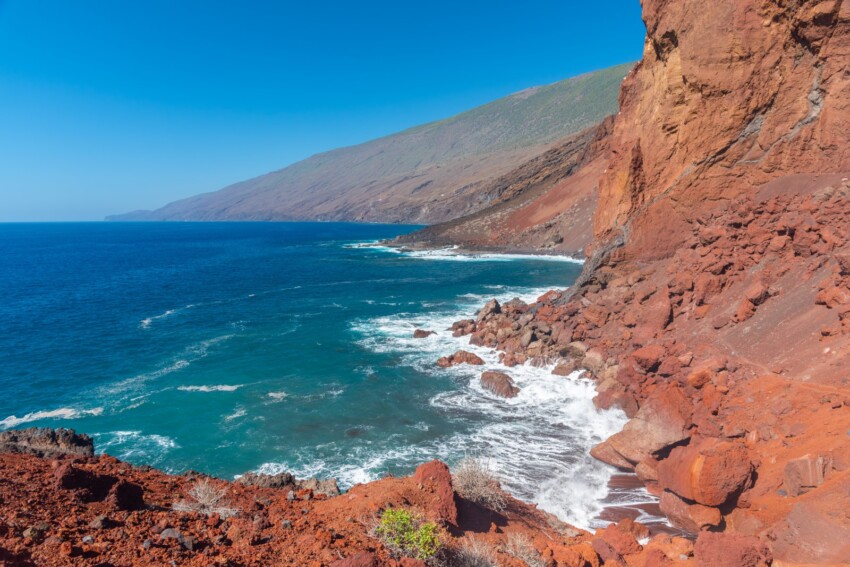
Cala de Tacorón is located along the southern coast of El Hierro, not far from El Pinar.
This small bay composed of natural pools enclosed by basalt cliffs is part of the El Mar de Las Calmas marine reserve and is an ideal place for snorkelling. Safe iron ladders can be used to enter the water. A small beach of coarse black sand is just a few steps away.
The Cala’s pools are surrounded by high reddish cliffs, black lava rocks and sparse vegetation. A barbecue area and a restaurant serving typical cuisine serve the beach.
Not far from Cala Tacoron is the Cueva del Diablo, which can be reached at low tide by following the path that branches off from the car park serving the beach.
Playa de la Restinga is located in the coastal resort of the same name. It is a small sandy beach facing the marina, with calm, crystal-clear waters. It is ideal for families with children, as all services and amenities are nearby. La Restinga also offers an access platform for persons with reduced mobility.
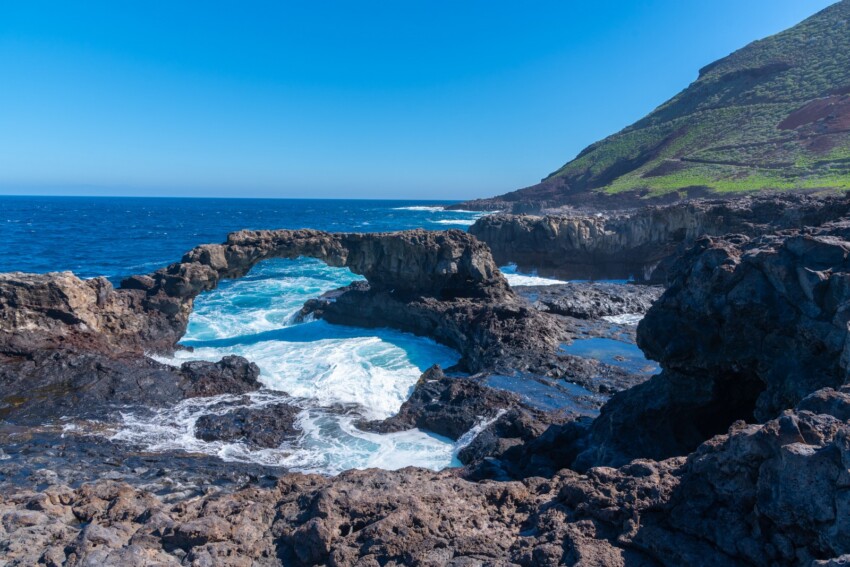
The natural pools of Charco Manso are located in the northernmost part of El Hierro, near Punta Norte Echedo, about 10 kilometres north of the island’s capital Valverde.
Although it is not really a beach since it is composed of bizarrely shaped rocks, Charco Manso is an unforgettable natural environment enclosed by low lava cliffs and bathed by crystal-clear waters that are always calm.
Just 30 metres wide and 10 metres deep, the beach has no facilities and is rarely crowded. Access to the pools is not easy: the path to reach them is narrow and steep in places but the effort will be rewarded on arrival by a paradisiacal setting.
To reach Charco Manso, take the road to Echedo in the direction of Las Salinas.
La Maceta are natural pools located in the large bay of El Golfo, along the northern coast of the island of El Hierro, and are 2 kilometres from Las Puntas.
Captivating and beautiful, the natural pools of La Maceta consist of three pools protected from the sea and currents at the foot of low cliffs. A small pebble beach lies beside the pools.
A picnic area is located behind the pools while several traditional restaurants are nearby. The view of Roques de Salmor is beautiful.
Not far away are the equally impressive natural pools of Charco los Sargos and Charco Azul.
To reach the La Maceta natural pools, simply follow the HI 5 road until you reach the sign indicating them.
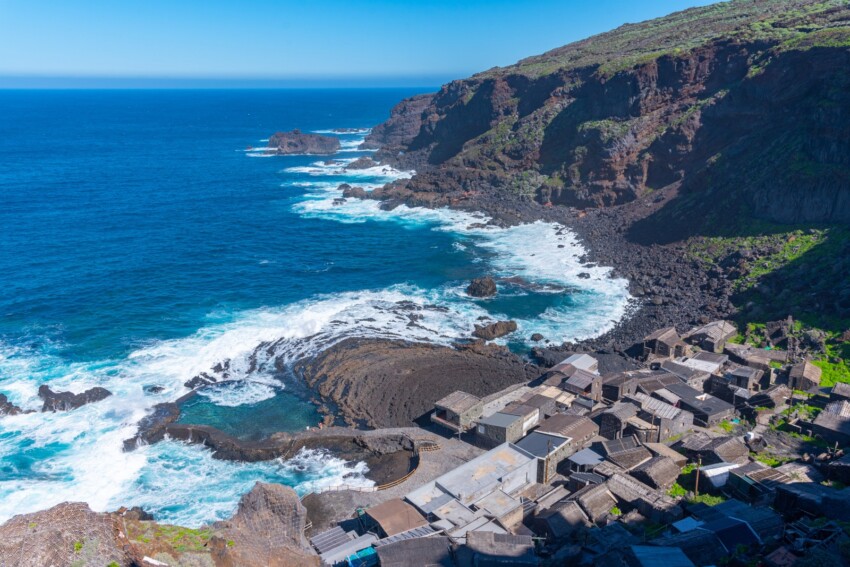
The pools of Pozo de Las Calcosas are located within a small natural bay along the northern coast of El Hierro, a few kilometres from the village of El Mocanal.
These two large natural pools, next to which are some typical Canary Island dwellings, houses with dry volcanic stone walls and thatched roofs, are ideal for children’s bathing.
The pools of El Pozo are surrounded by high volcanic cliffs and are only sunny in the morning. The only way to reach them is via a very narrow and steep path along the cliffs.
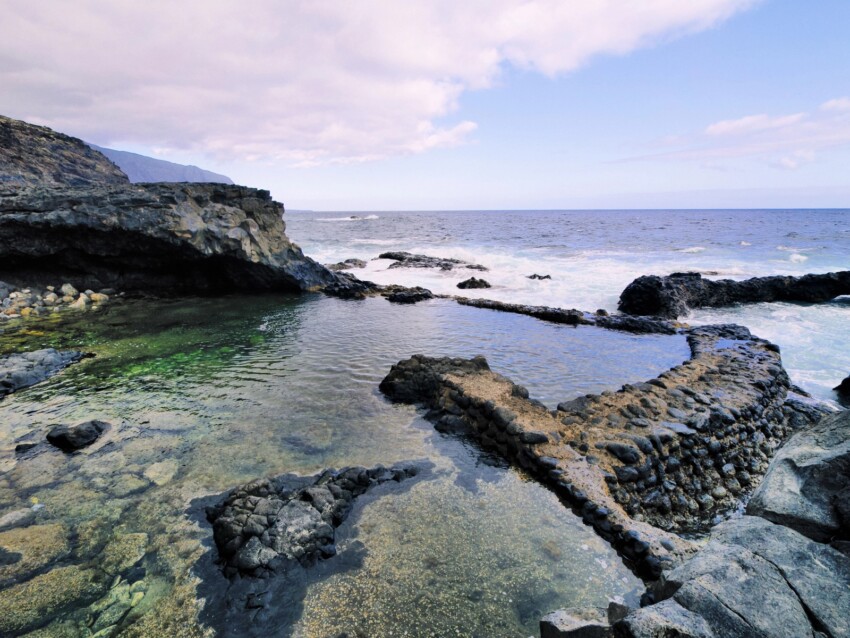
Charco Azul is a famous natural pool in El Hierro. It is located in the majestic Gulf Valley and was formed by lava that has receded over the centuries. It is one of the most spectacular bathing areas on the island, where you can swim in its turquoise waters sheltered from the mighty ocean, which occasionally manages to penetrate and leave its mark with its white foam.
To reach Charco Azul, you must first arrive in La Frontera, then drive about 4-5 kilometres along the HI-50 road to the village of Los Llanillos, and then follow the signs: the road will end after a few bends in a car park, where you can comfortably leave your car and enjoy the place.
In the following map you can see the location of the main places of interest mentioned in this article.